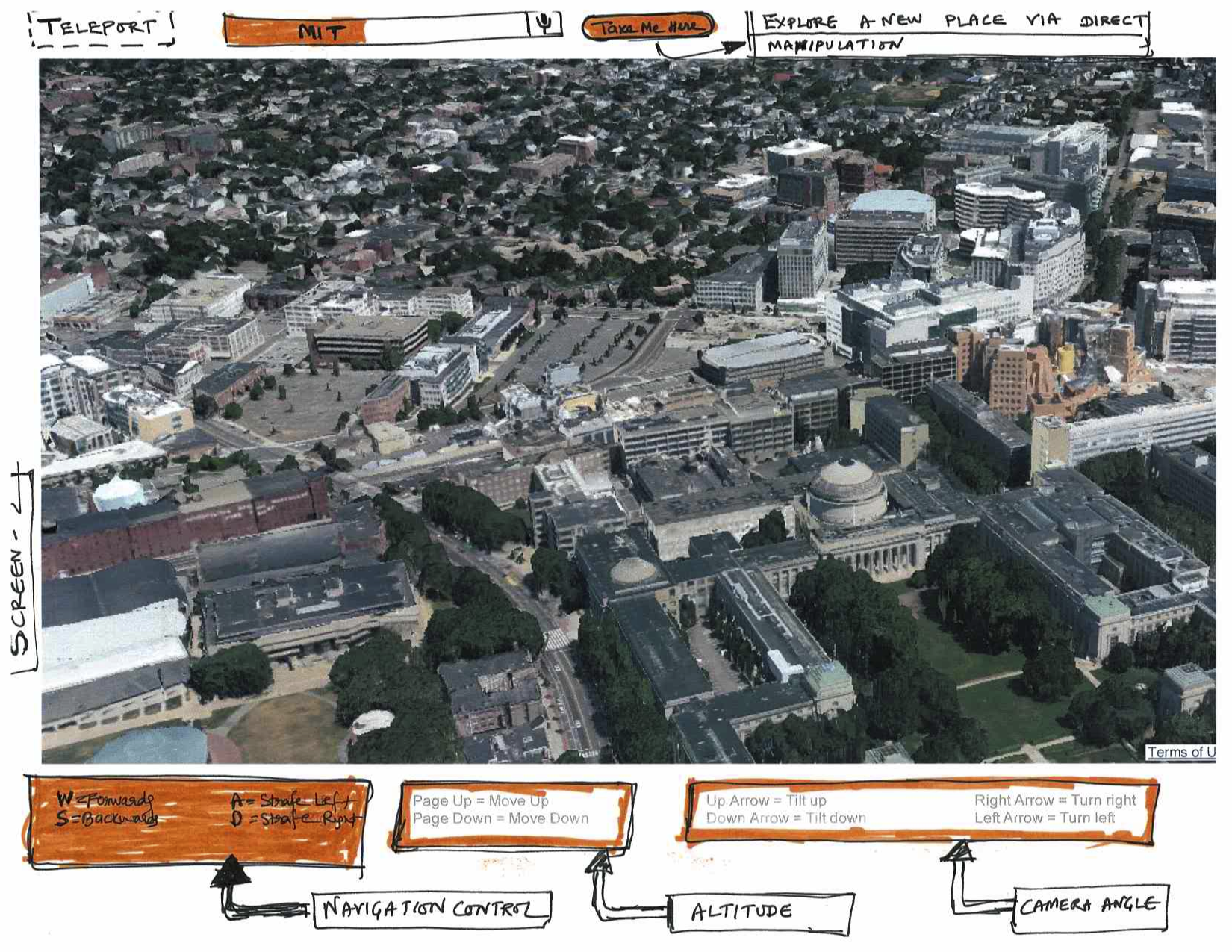Final (Anant)
The interface is designed to fulfill three main goals in mind:
#1: Arjun wants to see locations his son Raj mentions while they are on a call (in realtime)
#2: Arjun wants to explore those location (interactively) while talking
#3: Arjun wants to take a deep tour of some places after the call (in leisure time).
Arjun and Raj use Skype for calling and thus this interface tries to facilitate these tasks through an interface that looks very similar to skype.
|
|
|---|---|
|
This interface is inspired from Skype Interface
|
|
A call session (goal #2)
|
|
Arjun wants to explore the place after the call. He goes to Teleport and puts MIT Stata Center and clicks the button "Take Me here" (goal #3)
|
Learnability
- The interface (see the home page) uses the user mental model of chatting, calling and video calling
- Most popular tool used by people for international calling is Skype -- this user interface is consistent with Skype interface
- Auto-highlighting of locations is consistent with hovering affordance (people are likely to hover over highlighted text)
- Consistent choice of keys (arrows for camera angels, page up and page down for altitude and W,S,A,D for movement)
Efficiency
- For direct manipulation -- only keyboard inputs (navigation controls, camera controls and altitude) to avoid switching latency (switching time between keyboard/mouse)
- Avoids any effect of mouse sensitivity
- Allows random exploration (the text box on the top allows any valid location as an input) -- jumping from SFO to Boston is very easy.
- Autosuggest, and auto-complete
Safety
- For screen 3: if location recognizer fails to recognize a location or recognizes wrong location, user can change it. Also, there is auto-suggest.
- The interface is extremely safe because use can change location, camera angle, altitude, direction at any point of time as per their choice.
- A complete freedom for navigation -- (if you moved a little far ahead, you can come back, if altitude is not perfect, you can change the altitude). It provides safety against all user errors.


